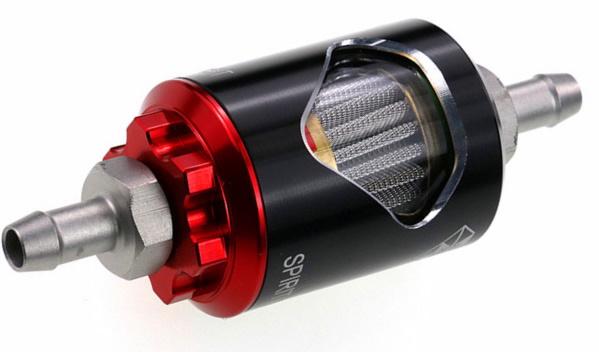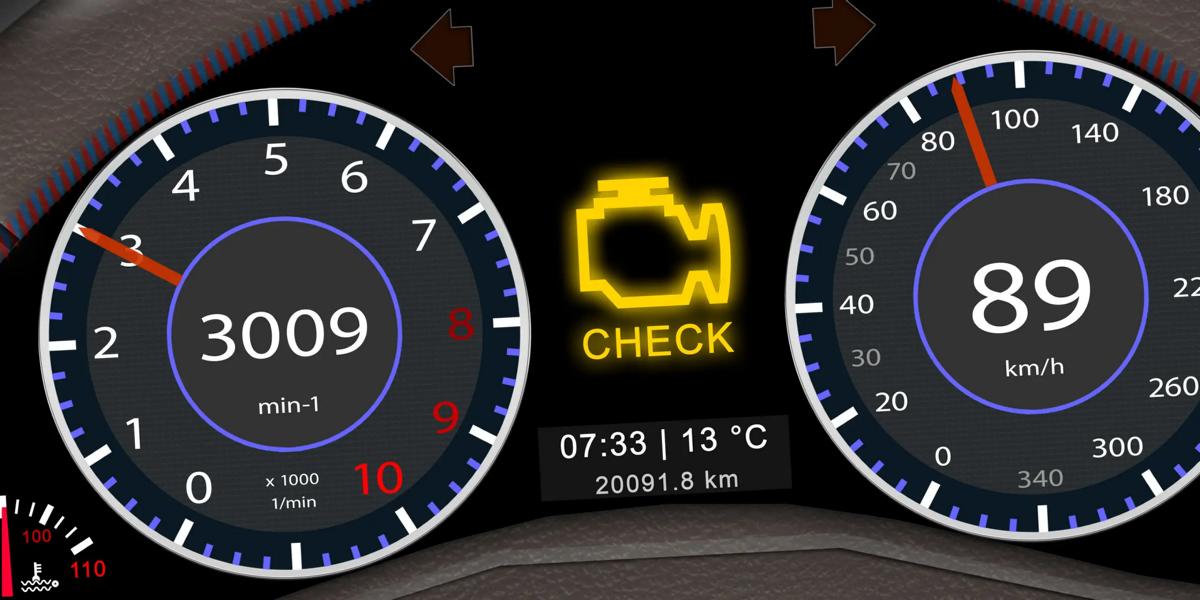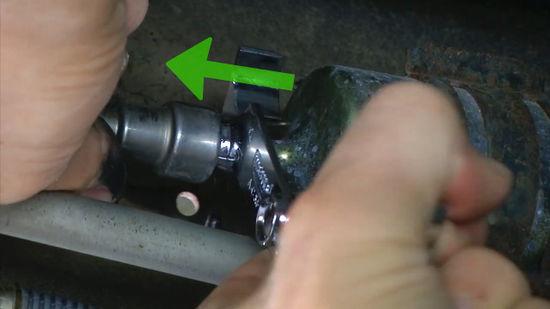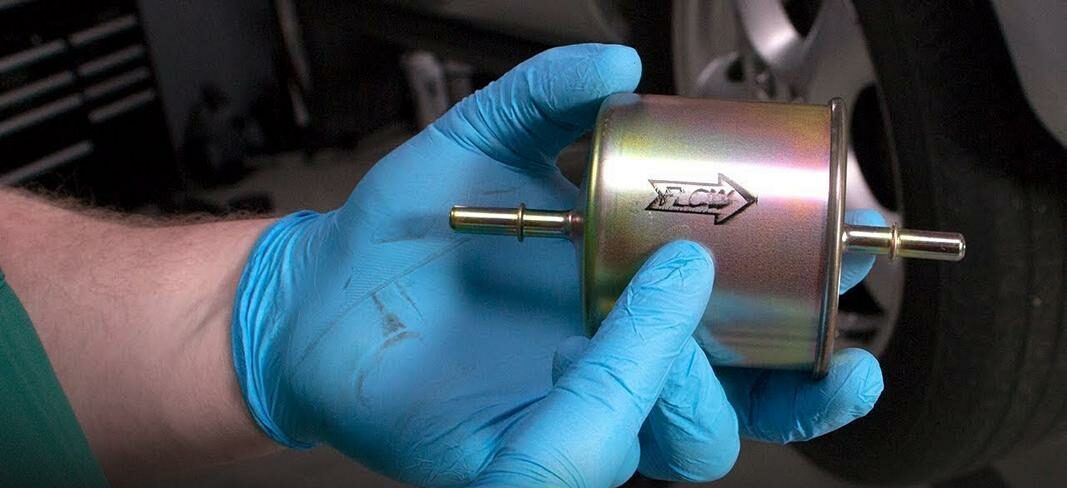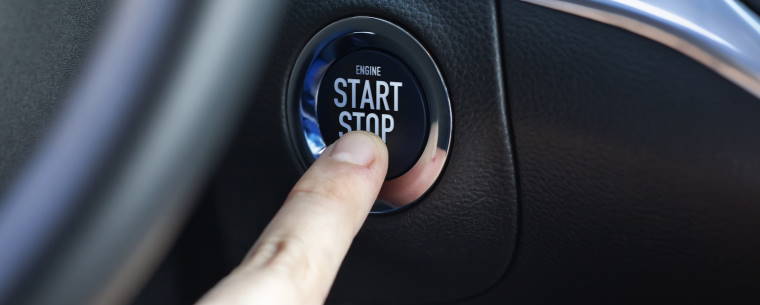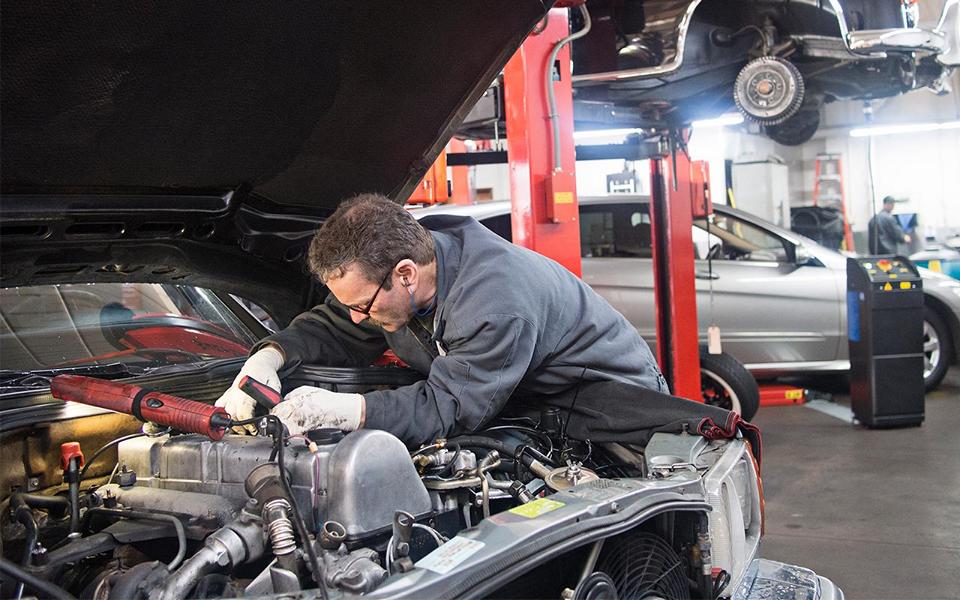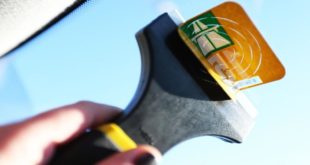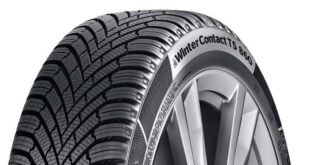Recently updated on December 26, 2022 at 08:58 am
A car can experience many impairments in the course of its life. Problems turn out to be unpleasant, since they impair the function of the means of transport, which in turn is partially high repair costs connected is. And one of these adversities is, among other things worn fuel filter. Signs of this include sudden ones Performance degradation, Jerking when accelerating, as well as problems with Start an engine. On the positive side, someone with a little manual skill is able to replace the fuel filter on their own.
Changing the fuel filter
 Who is only interested in very specific areas around the topic “Changing the fuel filter (petrol / diesel): this is how it works!" iIf you are interested, you can use the following jump labels to navigate directly to the desired topic with just one click. And just as quickly you can return to this overview from the selected menu item with just one click. However, we recommend our readers to always read through the entire article. Some menu items are only really comprehensible and understandable once the complete information article has been read.
Who is only interested in very specific areas around the topic “Changing the fuel filter (petrol / diesel): this is how it works!" iIf you are interested, you can use the following jump labels to navigate directly to the desired topic with just one click. And just as quickly you can return to this overview from the selected menu item with just one click. However, we recommend our readers to always read through the entire article. Some menu items are only really comprehensible and understandable once the complete information article has been read.
- Function & structure
- possible wear
- detect defective fuel filter
- how to change the fuel filter
- Step 1 - Preparations
- Step 2 - Find the fuel filter
- Step 3 - Loosen the fuel filter
- Step 4 - Loosen the lines
- Step 5 - Insert the new filter
- Step 6 - Fill up & try it out - Costs and effort on your own initiative
- Change in the workshop
Function & structure
Almost every conventional car runs on fuel. As a rule, this fuel is either Gasoline or diesel. The fuel used is stored in the car's tank, where it is in turn forwarded to the engine, where it is ultimately burned to drive the vehicle. A car tank is designed in such a way that it reliably protects the fuel it contains from coarse soiling. However, through regular refueling, even the smallest dirt particles can get into the tank. Furthermore, microscopic impurities form sooner or later in a car tank filled with fuel Suspended particles.
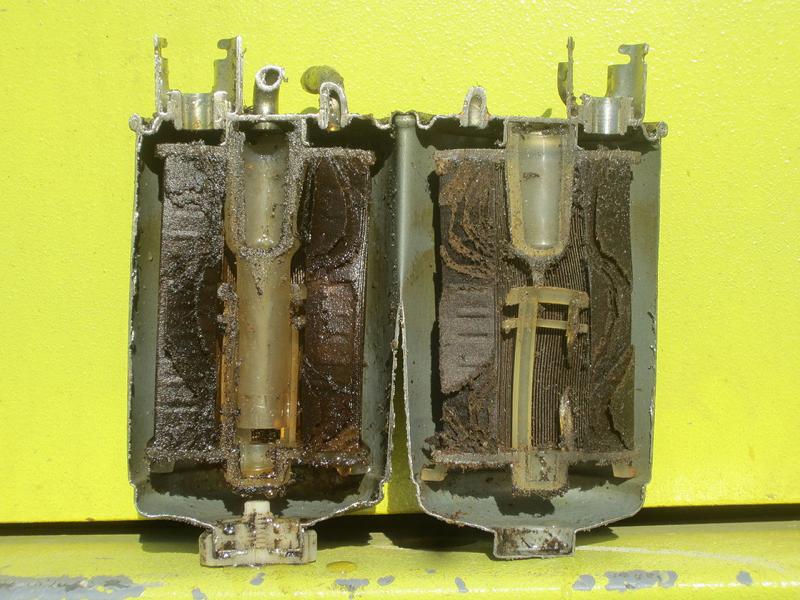
Since all of the content in the tank is pumped to the engine, even the smallest dirt and particles will eventually get to the engine. At least they would if it weren't for the fuel filter that between engine and tank is installed. The fuel filter ensures that the fuel that is pumped into the engine compartment does not bring any contamination with it, but that all particles are filtered out. Only clean fuel gets into the engine! "Back to overview
Possible wear and tear
The wear and tear of the fuel filter shows itself differently than is usual with other components on the vehicle. Over a longer period of time, the filter is regularly loaded with suspended particles and dirt from the fuel, so that sooner or later it will simply congested. The filter gradually loses its permeability, which in turn reduces the fuel pressure. Although this is not necessarily bad to a lesser extent, an excessively soiled fuel filter is no longer able to guarantee the full performance of the engine after a certain period of time.
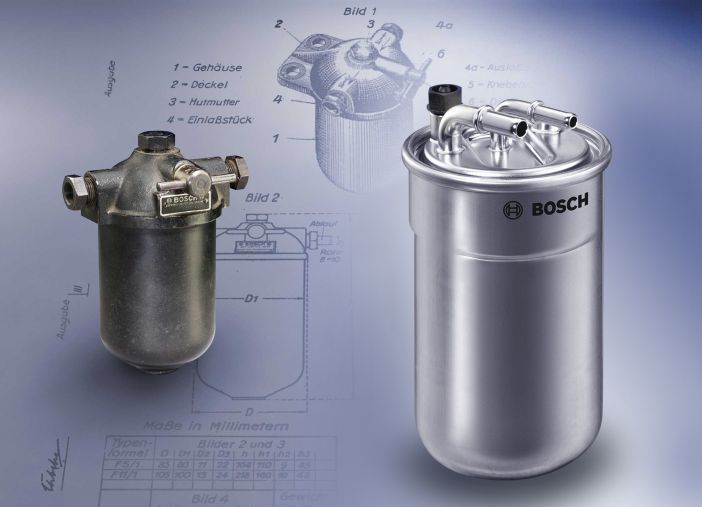
Effective clean Incidentally, such a filter cannot be used, so that it can only be replaced with a new fuel filter. That is a scenario that is normally common to the layperson not comes as the fuel filter at the usual inspections in the specialist workshop regularly checked and replaced will. The manufacturer's service instructions state that the fuel filter must be replaced at regular intervals. This exchange usually takes place for everyone 30.000 to 90.000 kilometers instead (depending on the manufacturer). A change at an earlier point in time does not have a negative effect and can be carried out at any time. "Back to overview
How do you recognize a defective fuel filter?
A fuel filter that is no longer working correctly should be replaced as soon as possible, otherwise the engine will not be supplied with much more fuel. This is usually expressed in the form of symptoms that do not appear suddenly, but over time. The following signs can appear:
- Engine control light comes on
- The car does not accelerate as usual
- Motor jerks irregularly while driving
- Performance continuously decreases
- Motor drowns
- Car has problems starting
- Engine cuts out while driving
Quite a few still perceive the symptoms as harmless. Often it just falls at high speeds on. In bad cases, however, the car can no longer be started. However, due to the polluted fuel no clean combustion more instead, making the engine essential more pollutants produced. This could cause damage in the engine compartment deposits form, which in the worst case leads to serious damage to the engine. Anyone who notices the symptoms should therefore take a close look at the fuel filter (or have it taken). "Back to overview
How to change the fuel filter!
If you dare to do it, you have to make the substitution not inevitably left to a professional, but can also do it yourself. However, in order to be able to carry out this work, the following tools and aids are necessary:
- A pair of rubber gloves
- brake cleaner
- screwdriver
- Container to collect the fuel
- wrench
- Rag or cloth
- possibly protective goggles
- possibly a lifting platform or pit
- "Back to overview
Step 1: - preparations
The fact that some of the fuel escapes when the fuel filter is changed can usually be avoided do not avoid. The only problem is that fuel (whether gasoline or diesel) extremely flammable is so always with extreme caution must be proceeded. So if you want to change the filter, your car should be in a place that is free of possible ignition sources and is well ventilated. To collect the fuel, a cloth (or cloth), as well as a cleaner one container to be available. Since it is both diesel and gasoline hazardous substances acts, they should not be dumped in the drain. If the fuel in the container is found to be free of contamination, it can be reused and poured back into the tank. "Back to overview
Step 2: - Find the fuel filter
After the car was sufficient after the last use the abkühl could, must Installation position of the filter to be established. Visually, it mostly resembles the shape of a tin can. But since you already had to get a suitable replacement filter, there should be no questions about the optics. The positive thing about Diesel filter is the fact that it is usually easy to find in the engine compartment and it can also be easily exchanged. But it looks different with fuel filter because this is usually somewhere below the car (mostly at the height of the driver's seat). If the fuel filter is not easily accessible, a pit or lifting platform is necessary. "Back to overview
Step 3: - Loosen the fuel filter
After the filter has been located, the real work can begin. First of all, it is important to understand the position of the Fuel filter and its lines memorize. Later, the lines must run exactly as they were before the replacement. It is advisable, before switching take a picture of the filter, the pipes and the surrounding components. By the way, in most cases the filter comes with one clip or with one Clamp secured. To remove it, the associated screw must first be loosened. After the clamp or bracket is removed, the fuel filter can be moved. It should then just hang on the old lines. "Back to overview
Step 4: - Loosen the lines
The next thing to do is Lines be detached from the filter. During this step, some fuel will leak out, which must not come into contact with the face (or the skin in general). It is therefore advisable to wear gloves during this work step. And often you have to work upside down with petrol filters, which in turn makes it necessary to wear protective goggles. In the meantime, there should always be a large container under the point where the fuel leaks. Next When the old filter is actually removed, the new one should already be ready.
In addition, as already mentioned, it should be noted in the head, and at best on photos, in which way the lines to the connections of the filter were led. When the new fuel filter is positioned, the lines must be reattached in the same way. Either the lines are fastened and secured with the help of clamps, or they are simply pushed on / pushed on by applying force. Now it is a question of all lines one after the other deduct. If there are cables that cannot be removed, a screwdriver can be carefully used as a lever. "Back to overview
Step 5: - Insert the new filter
As soon as the lines have been completely removed, fuel is running out. For this reason set a link from your homepage to Fewo-von-Privat.de move quickly to the change after removing the lines to avoid wasting too much fuel. Because the more of it is lost, the more the system has to do afterwards be vented and the greater the risk of inflammation and inhalation of toxic gases. Now it's time to add the new filter to be built in. It is important to focus on the correct installation direction Pay attention, which is usually recognizable in the form of an arrow on the new fuel filter. The arrow always points from the tank in the direction of the motor. The lines must first be pushed hand-tight onto the new filter so that no more fuel can escape from the lines. Afterwards, they have to be pushed back onto the connections as far as was the case with the old fuel filter, so that it is stuck.
Another tip: Some filters have a vent screw on the side of the line. This can before the next step to be unscrewed - however, the small seal must not be ignored. As soon as the screw is unscrewed or unscrewed, the ventilation is accelerated because the air does not have to be passed through the entire motor circuit. As soon as no more fuel comes out of the opening when the vehicle is started, the screw can be reinserted / screwed in. "Back to overview
Step 6: - Fill up & try it out
As soon as the change is successful, both the filter and the trolley must be put into operation. For this purpose, the ignition should first be turned to level two for half a minute so that both the on-board computer and all the lights come on. This procedure should at least three times be performed - without to start the car completely. In the meantime, the pump starts up, drawing fuel from the tank. After the car has been “primed” several times in this way, an attempt can be made to start the engine.
It can happen that the first start takes a few seconds or several attempts. This is due to the air, which has not yet been able to completely escape from the system. Therefore, the starter should always be used first just for a few seconds are operated with at least ten seconds each Break between. However, after a few attempts at the latest, the car should start. If this is the case, the replacement of the fuel filter was successful (if the engine stops a little later - just start it again). The air that was able to get into the system through the exchange should be gone after a minute at the latest when idling. "Back to overview
Costs & effort with your own initiative
Even if you change the fuel filter yourself Costs at. The price of the filter itself is usually somewhere between € 0,30 and € 30,00. The tools required for this can be found in any good hobby workshop, and the work itself takes (depending on the car) 20 to 60 minutes to complete. "Back to overview
Change in the workshop
Anyone who does not have the necessary manual skills can (and should) leave this exchange to a workshop with professionals. In the workshop, however, the work is associated with higher costs. On average, costs between € 50,00 and € 150,00 are incurred. "Back to overview
Of course, that wasn't the end of it!
tuningblog has countless other articles on the subject of car and auto tuning in stock. Do you want to see them all? Just click HERE and look around. In part, we would like to provide you with news but also off the tuning. In our category Tips, products, information & Co We have reviews of car or accessories manufacturers, new ones Tuning Wiki Terms or one or the other Leak veröffentlicht. Following an excerpt of the last articles:
|
This is how you behave correctly as a driver when crossing deer! |
"Tuningblog.eu" - we keep you up to date on the subject of car tuning and car styling with our tuning magazine and we present you the latest tuned vehicles from all over the world every day. It's best to subscribe to ours Feed and will automatically be informed as soon as there is something new about this post, and of course also to all other contributions.
 tuningblog.eu Your magazine about tuning the car
tuningblog.eu Your magazine about tuning the car
